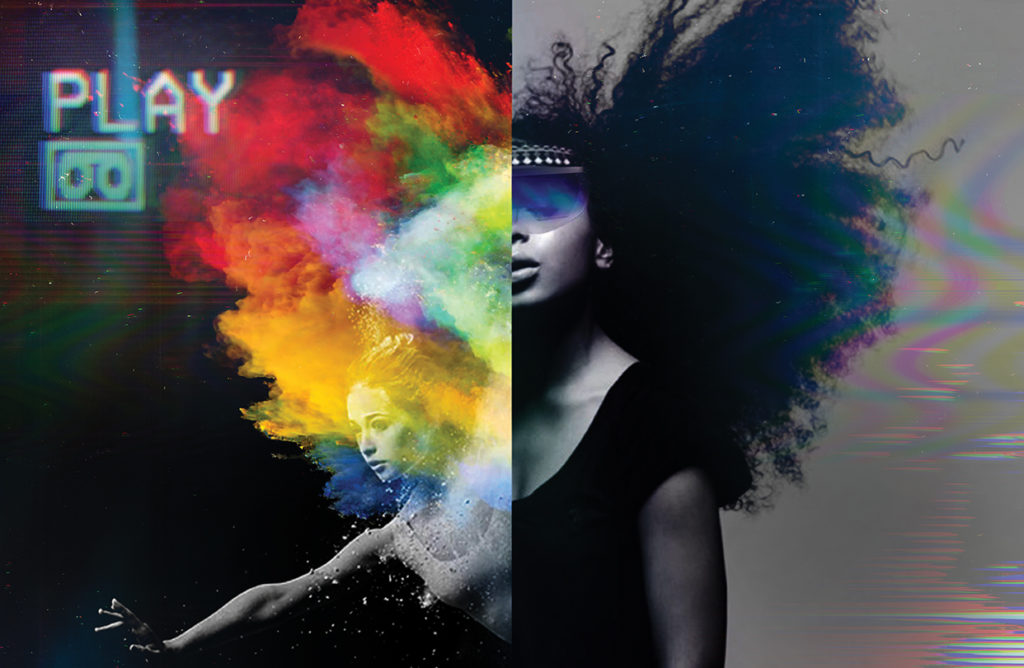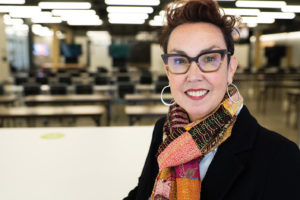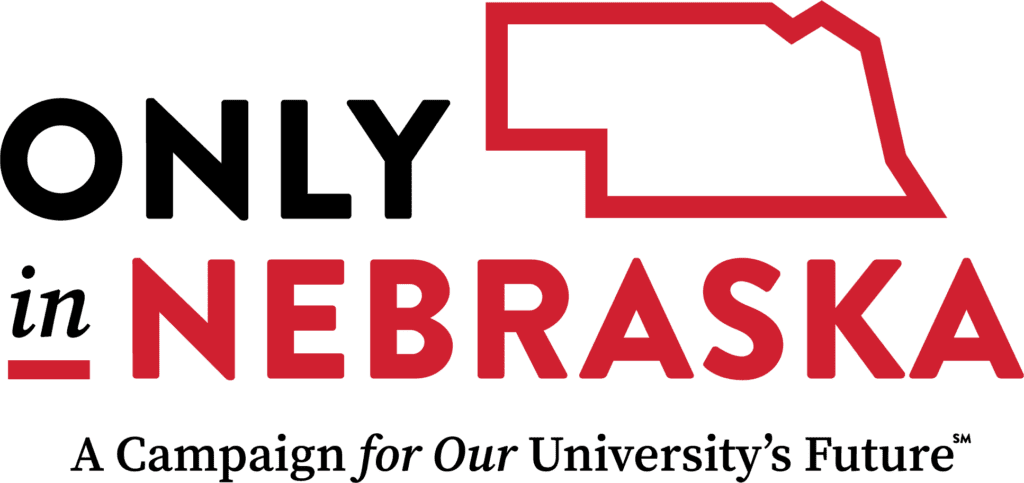Johnny Carson Center for Emerging Media Arts is Where Storytelling Becomes Reality


More than a year after COVID-19 put the world on lockdown, a lot has changed. Many are wondering what the post-pandemic world will look like. What will stay — the transformed workplace, the virtual connections and work-life balance, the amount of time spent outside?
The uncertainty is leading to creation. It’s an opportunity to discover and create a new world — and elements of that new world are being designed here in Nebraska.
“We’re right at the nexus of creativity and technology on the cusp of the future,” said Megan Elliott, director of the Johnny Carson Center for Emerging Media Arts at the University of Nebraska–Lincoln. “We’re always attuned and listening to the incoming of the other, if you will, because that’s how you bring the future into being.”
The Johnny Carson Center for Emerging Media Arts opened in the fall of 2019 with a new building and renewed momentum. The center’s vision is to prepare students for a media environment transformed by emerging technologies, such as animation, virtual and augmented reality, interactive media and gaming.

Elliott says the Carson Center is where storytelling becomes reality.
“What we see in our movies is what we design in our future,” she said.
Referring to a conversation between science-fiction author Douglas Adams and filmmaker Stanley Kubrick, Elliott said Adams questioned Kubrick about what robots would look like in the future, and Kubrick answered, “Whatever we make them look like now!”
“We wield something very powerful as the people who get to design these images and put them into the future,” Elliott said. “We don’t just discover the future; we influence how it’s going to unfurl.”
Carson Center students can take classes in filmmaking, game design, special effects, augmented reality, experience design, virtual reality and animation. They are learning technologies that are quickly expanding in application to other industries. The Carson Center, per its website, is a collaborative hub where physicists may collaborate with artists “to create an immersive world that shows what happens when atoms collide” or where biomedical faculty work with film students “to create simulations of the human body.”
In the class of Ash Eliza Smith, an assistant professor of emerging media arts, students have partnered with Jason Griffiths, an associate professor in the College of Architecture, to reimagine spaces that were underutilized due to the pandemic.
“We are reimagining our current shared world,” Smith said. “We asked, ‘How do we spend more time outside and rethink these systems?’”
One project proposed a colorful, pedestrian-friendly boardwalk in downtown Lincoln that offers a permanent space for the city’s popular annual music festival, Lincoln Calling, and encourages other spontaneous performances throughout the year. Another proposed an urban garden constructed on street scaffolding, while another highlighted ecological systems that thrive in undesirable spaces (like weeds in a cracked parking lot).
Smith also conducted a worldbuilding innovation studio with collaborator Alex McDowell, RDI, who sits on the Carson Center’s advisory council and brings Hollywood bona fides as a production designer for films such as “Minority Report” and “Fight Club.” These classes, Smith said, offer a lens through which to envision the future.
“We could use that to reimagine our city … schools … governance … economy,” she said. “There are all these ways we can think about using this as a methodology for civic imagination.”
One element of the new COVID world is fluidity of place. In other words, Carson students may not need to move to Los Angeles or other film and media hubs to pursue their ambitions in creative work. Elliott said several students have secured internships with companies in L.A. and New York that don’t require them to leave Lincoln.
Annie Wang, who is beginning her senior year at the Carson Center, was a finalist for a highly competitive internship in animation at the Television Academy Foundation in Hollywood. The internship is typically based in California but went virtual in the pandemic.
Wang, who loves all aspects of film production, particularly editing and directing, said she considered going out of state to study film. But when she learned more about the Carson Center, she was excited about the opportunities available that were so close to home and affordable.
Wang said she’s developed a network of like-minded creatives at UNL who have become close friends.
“I think I found a very good family here in terms of my cohort,” she said. “I just feel very grateful that I’ve found so many great friends and collaborators … and I have some really great professors that also have my back.”
Wang said she’s hopeful she won’t have to move to L.A. after graduating, at least not at first. She plans to jump-start her career at a local advertising agency or creative firm and said she’s been surprised by how much creative energy she’s discovered in Lincoln.
“It’s kind of cool seeing that there are so many creative people out there that are willing to put in so much to bring things to life,” she said.
Elliott, who came to her position from Australia, where she led the digital media think tank X Media Lab and worked with people all over the world, said she was not surprised by the creativity happening in Nebraska.
“Innovation happens at the margins,” she said. “In this country, the margins happen to be in the middle. So it doesn’t surprise me that in a place which is overlooked by many people, that this is where real innovation is taking place.
“This is where it should be happening, because we’re not saturated. We can be pioneering in our ideas, not just our spirit.”
Smith agrees. She came to UNL from North Carolina and then California, where she taught at the University of California San Diego. She said she thinks Nebraska plays a central role in the transformative issues of our time, including the conservation and production of natural resources, such as water and food.
“The center is the new edge,” Smith said. “This is where things are happening. I think more and more people are paying attention to that.”
Smith added that Nebraska has to do more than offer creative educational opportunities for young people. It has to invest in its communities to entice students to stay there after graduation.
“Students reinvest in the place where they were educated,” Smith said. “So we also have to invest in our communities and our imagination of what those places can be. How can we create something so cool that students want to stay here?”
Done right, a post-pandemic world could mean that Nebraska is the coolest place to be for young, creative professionals. At least that’s the vision.
“You can stay here and work remotely; you can build a business here that has remote clients and workers around the world,” Elliott said. “People can start to rethink the balance of life.”
Elliott said the pandemic merely accelerated changes that were already in motion. Technology is transforming how we live and the world functions. That’s why the Carson Center is devoted to graduating “X-shaped” students, its website explains, who have ownership over their futures and the ability to “thrive in a changing, diverse, global environment.”
Elliott pointed to an essay in the Financial Times by Arundhati Roy, who wrote the pandemic “is a portal, a gateway between one world and the next.”
Roy continued: “We can choose to walk through it, dragging the carcasses of our prejudice and hatred, our avarice, our data banks and dead ideas, our dead rivers and smoky skies behind us. Or we can walk through lightly, with little luggage, ready to imagine another world. And ready to fight for it.”
Elliott said, “When I read that I thought that’s exactly right. It’s an opportunity to really reimagine what it is we want to do when we return to normal … how we learn, how we have internships, how we show up for each other and how we support each other … and that’s something that’s really exciting.”





